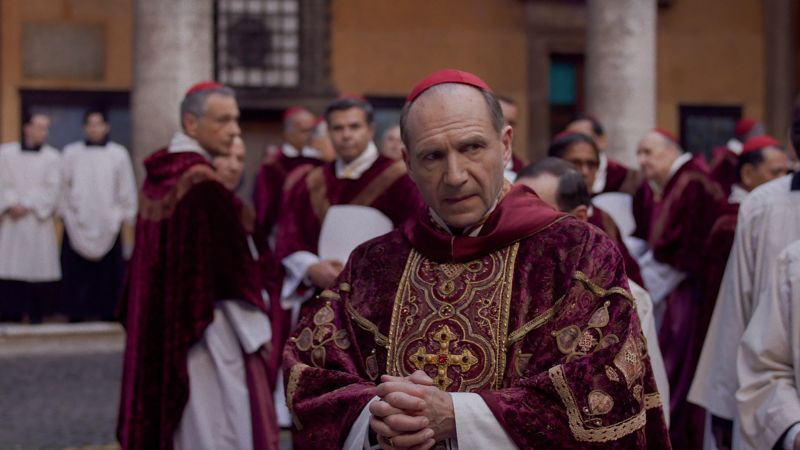In a year that has been characterized by intense political activity, the release of a new film that explores the intricacies of an age-old and enigmatic voting process is indeed timely. This film, titled “Conclave,” directed by Edward Berger, best known for his adaptation of “All Quiet on the Western Front,” delves deep into the world of papal elections. With a remarkable ensemble cast featuring actors like Ralph Fiennes, Stanley Tucci, Isabella Rossellini, and John Lithgow, “Conclave” unveils the intricate blend of mystery, tradition, and most notably, the political maneuvering that underpins the election of a new pope.
Based on the 2016 thriller penned by British author Robert Harris, “Conclave” has generated significant buzz even before its release, with many anticipating accolades owing to its narrative strength and thematic depth. The story portrays what Harris describes as a conflict between the “power of God and the ambition of men.” This intriguing premise allows viewers to speculate on what the dynamics of a future papal conclave might entail, igniting discussion about faith, power, and the underlying motives within the halls of the Vatican.
The film captures the delicate tension present among senior figures in the Roman Catholic Church, showing their struggle between deep-rooted faith and the personal ambitions that accompany the pursuit of high office within the Church. In this context, Berger immerses the audience in clandestine discussions that take place behind closed doors in the Vatican, highlighting how potential candidates for the papacy must navigate a landscape where overt campaigning can be detrimental to their chances of being elected.
However, “Conclave” finds itself facing criticism from certain factions within the Church. Bishops and church officials, including prominent voices like Bishop Robert Barron, have taken to social media platform X to admonish viewers to avoid the film. Barron argues that the film is laden with “woke” sentiments, emphasizing themes of diversity and inclusion that he perceives as trends to be resisted rather than embraced by the Church. He also argues that the portrayal of church leaders is historically inaccurate, depicting them as consumed by ambition and corruption, while conservatives are framed as xenophobic extremists, and liberals are characterized as self-serving schemers.
Much of the film’s narrative accords with broader questions surrounding the future direction of the Catholic Church. As the next conclave approaches, observers are left to ponder whether the cardinals will opt for a candidate who aligns with the more progressive ethos of Pope Francis, or if conservative factions will reclaim influence and shift the institution back in a more traditional direction. The cardinals face the challenge of identifying a candidate who can bridge divides and inspire unity while still embodying personal credibility—an intricate balance when higher theological principles of guidance are at play.
Steven P. Millies, who heads the Bernardin Center at the Catholic Theological Union in Chicago, supports the notion that the film correctly reflects the reality of conclaves as exercises in careful political negotiation. He suggests that this particular form of politics is not inherently at odds with divine influence; rather, it is essential to forming the future path for the Catholic Church. The conclave remains a highly confidential affair, with cardinals sequestered away during the election process, strictly prohibited from outside communication, in an effort to maintain the integrity and sanctity of the selection.
Finally, while “Conclave” aims for authenticity, several details stand out as either exemplary or contentious. The film receives accolades for its realistic portrayal of conclave proceedings—including the solemn rituals involved and even mundane activities like the participants’ meals or the logistics surrounding their accommodation. However, it has been pointed out that certain inaccuracies exist in details such as how cardinal interactions are depicted. Critics have flagged the conclusion of the film as particularly implausible, while others have praised the storytelling arc, emphasizing the journey of a particular character finding his faith amidst convoluted challenges.
In wrapping up, “Conclave” serves not merely as a cinematic exploration of clerical politics, but also as a canvas upon which themes of faith, ambition, and the evolving dynamics within the Catholic Church can be elaborated, compelling viewers to reflect on the duality of spirituality and governance just as the cardinals prepare to cast their votes beneath the resplendent frescoes of the Sistine Chapel.



